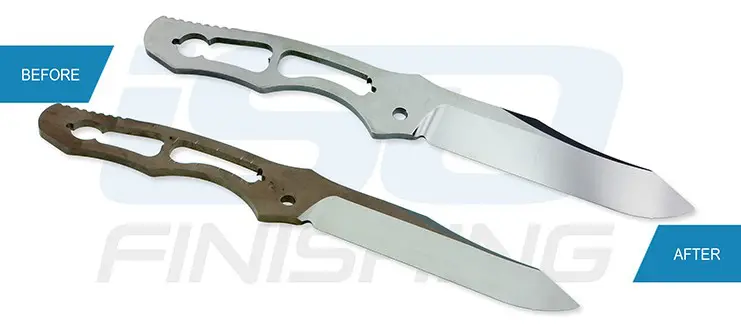Burrs, which are a ridge or area of roughness, typically occur when the material used to create the part is cut, or pieces of the material are removed. Methods such as welding, molding, casting, and shearing tend to cause sharp, bumpy edges that affect part performance. These imperfections can also impact the quality and longevity of a part, as well as influence its ability to hold up when subjected to stress, strain, or pressure. The deburring process is needed to remove machining burrs that occur during the manufacturing process.
Purpose of Deburring
The deburring process is meant to remove a build-up of burrs and other imperfections from a finished surface. It is also a prerequisite to other processes, including powder coating and electroplating. Deburring is a truly valuable step in the manufacturing process. In addition to reducing product waste, deburring improves product quality, reduces friction, mitigates risk, increases the lifespan of a part, and enhances aesthetic appeal.
Other benefits of deburring include:
- High-quality finishes
- Improved consistency
- Increased safety
- Improved edge quality
- Reduced assembly time
- Better finish adhesion
- Reduced surface roughness
Techniques Used in Deburring
There are several deburring techniques available, but two of the most common methods are vibratory and centrifugal barrel finishing. The technique used is to deburr a part is primarily determined by the type of material, size of the part, and the desired surface finish.
Vibratory Deburring and Finishing
Vibratory deburring and finishing is the most common technique used for mass finishing parts. During vibratory deburring and finishing, parts are placed inside of a chamber with specially shaped pellets of media. The chamber is then vibrated, which creates friction as the parts and media rub against one another. This process can be done wet or dry, depending on the application requirements. The end results in what appears to be plated but is not. It is actually polished.
Our documented processes are unique for each customer, providing consistent results, making it ideal for high-volume part finishing. Vibratory deburring machines can reach small alcoves or niches, which is why this technique is commonly used for delicate and intricate parts. This method is efficient for large surfaces, as well. The process can be altered to process large surfaces using short stroked at high speeds for quick and efficient deburring.
Centrifugal Barrel Finishing
If a part requires heavy deburring, centrifugal barrel finishing is often used. This technique also uses tumbling media, but the process involves spinning the barrel rapidly to create centrifugal force. The friction from the parts and media moving against one another is what removes the burrs and creates a superior surface finishing.
Like vibratory deburring, centrifugal barrel finishing can be done wet or dry, depending on the material and polishing requirements of the parts. Dry tumbling is more likely to be used when a delicate surface finish is required, while wet tumbling is used to remove excess material and polish the surfaces of metal parts.
ISO Finishing specializes in vibratory finishing, high-energy polishing, and micro-precision surface improvement. Through our innovative finishing solutions and industry-leading delivery times, ISO Finishing has become the go-to finishing resource for Fortune 500 manufacturers to small business owners alike. Contact us today to learn how we can assist you with surface perfection and burr removal in your manufacturing process.
If you’d like to learn more about mass finishing or to request a free sample please contact our team.


